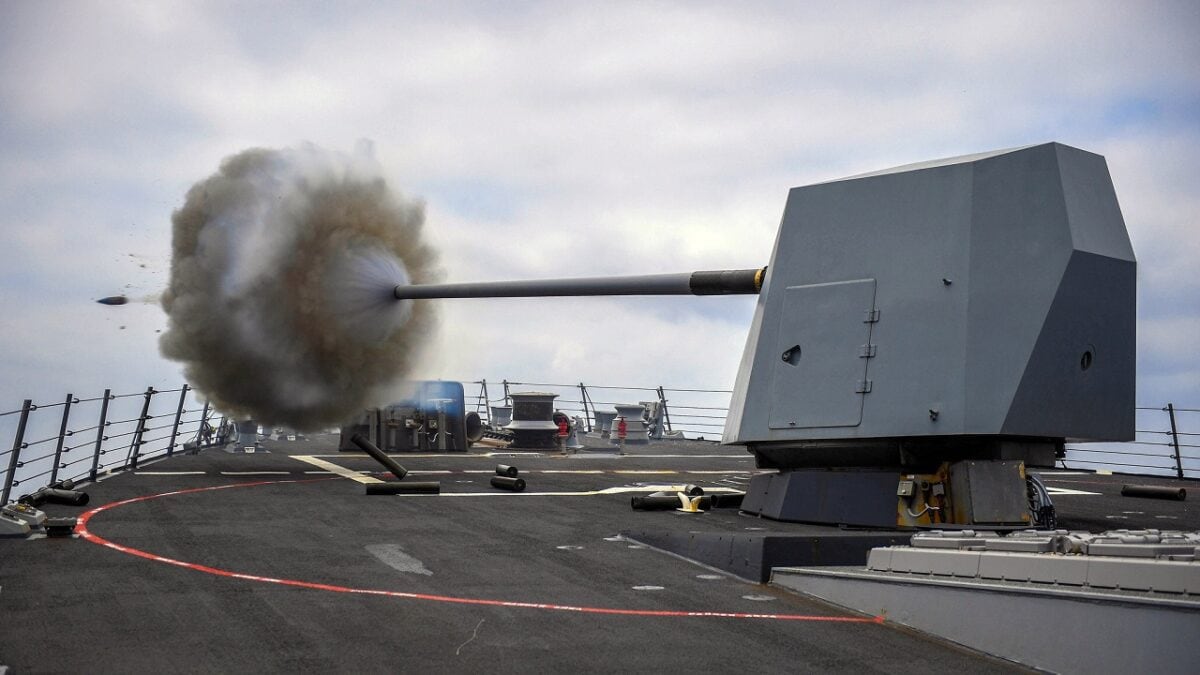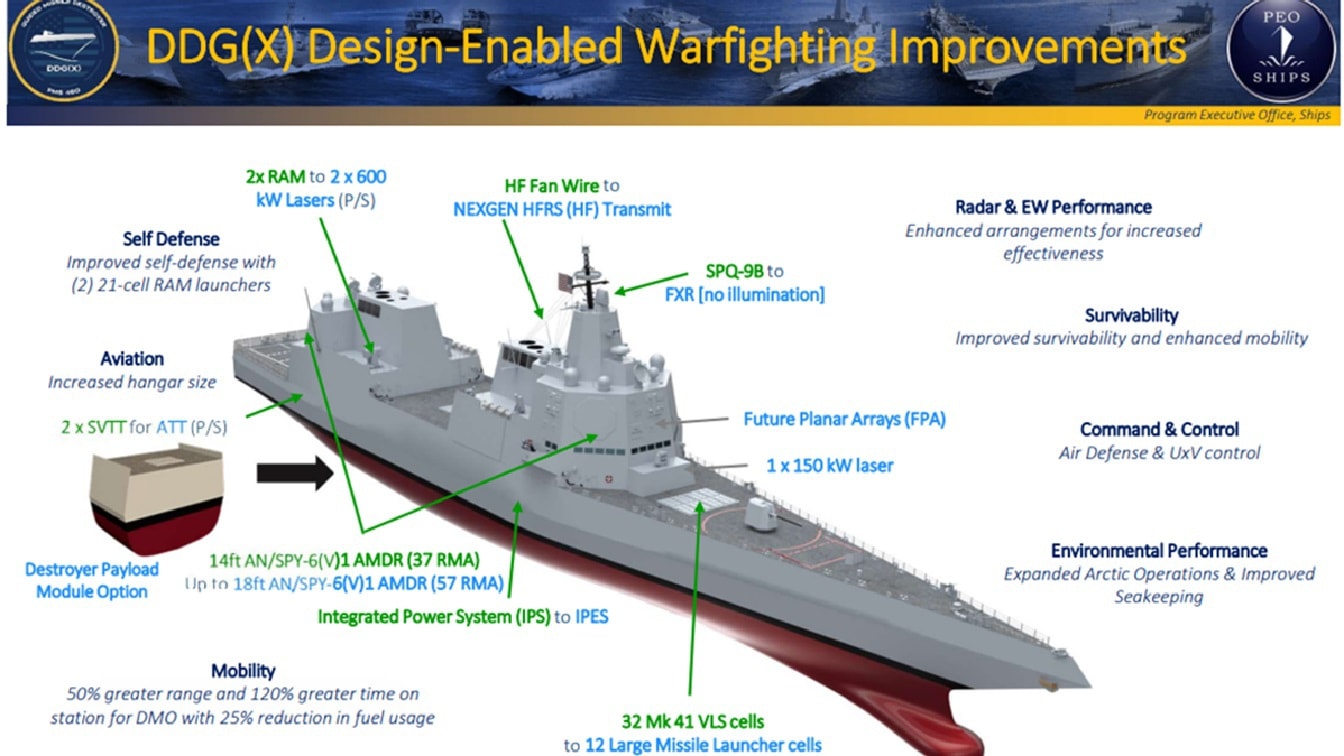DDG(X) Is the Future of U.S. Navy: Navy Seeks Warships Armed With Lasers and Hypersonic Missiles – Lawmakers often accuse the military of always wanting more – a fact that isn’t entirely accurate as the United States Air Force has also sought to clip the wings of some aging warbirds to use the money for the development of future combat aircraft, while the United States Navy has sought to retire several of its Littoral Combat Ships (LCS) years ahead of schedule.
In the latter case, the Navy is also thinking ahead, and it actually does want more. In addition, to potentially a larger size fleet – something supported by lawmakers in Washington – some Navy officials are calling for a new class of vessel that could be equipped with lasers that could be utilized to shoot down enemy missiles, as well as hypersonic missiles to target an adversary’s fleet.
In this case, the Navy also isn’t just adding “more” but is looking at what has worked and, as importantly, what hasn’t.
The Associated Press reported that the future class of destroyers would be an opportunity to take the service in a new direction after the production run of Arleigh Burke-class guided-missile destroyers is completed
“It will be an impressive destroyer that will absolutely launch us into the next generation of ships,” Tom Stevens, director of ground assembly at Navy shipbuilder Bath Iron Works, told the wire service.
The Future DDG(X) Is About to Set Sail
The Arleigh Burke-class has remained the backbone of the United States Navy in the post-Cold War era, and 70 are now in service. Though seven are now being built – and a number a dozen are on order – the first of the vessels is beginning to show their age, having been commissioned in the early 1990s.
With an overall length ranging from 505 to 509.5 feet (153.9 to 155.3 meters), and displacing between 8,230 to 9,700 tons, the Arleigh Burke-class is actually larger than most previous ships classified as guided missile cruisers. Each is also more heavily armed than past cruisers and is equipped with more than 90 missiles.
Yet, the future DDG(X) could take the armament even further – and arguably could have the striking potential of the old battleships. Instead of the big guns, the hypersonic missiles could do the “heavy lifting.”
The first design contracts for the future warships were recently awarded to General Dynamics’ Bath Iron Works in Maine and Huntington Ingalls Industries in Mississippi. In addition to packing more firepower, the ships will likely come with a higher price gat. The average cost is currently projected to be about a third more expensive than the Arleigh Burke-class guided-missile destroyers, which cost about $2.2 billion each.
DDG(X): Learning From Past Mistakes
Though no designs have been made public, no one should expect a radical design. That’s because the Navy has already vowed it won’t repeat its all too recent shipbuilding debacles as it rushed the production of its Zumwalt-class destroyers or tried to find a role for the LCS after multiple ships had been produced.
Moreover, the Navy didn’t want to make vast leaps forward, which resulted in delays with the USS Gerald R. Ford (CVN-78) as various issues had to be sorted out.
The future DDG(X) will thus be more evolutionary than revolutionary in design.

ATLANTIC OCEAN (June 30, 2018) The Arleigh Burke-class guided-missile destroyer USS Bainbridge (DDG 96) fires its Mark 45 five-inch gun during a live-fire exercise. Bainbridge, homeported at Naval Station Norfolk, is conducting naval operations in the U.S. 6th Fleet area of operations in support of U.S. national security interests in Europe and Africa. (U.S. Navy photo by Mass Communication Specialist 1st Class Theron J. Godbold/Released)180630-N-FP878-566
“Rather than tying the success of DDG(X) to developmental technology, we’re using known, mature technologies on a flexible platform that can be upgraded for decades to come, as the technology of tomorrow is matured and demonstrated,” explained Navy spokesperson Jamie Koehler.
There are still some who hope the DDG(X) won’t turn out to be a “camel” – as in a horse designed by committee, which proves to be ill-suited to future needs. However, the Navy is determined not to make a third strike after the Littoral Combat Ship and Zumwalt.
Expert Biography: A Senior Editor for 1945, Peter Suciu is a Michigan-based writer who has contributed to more than four dozen magazines, newspapers, and websites with over 3,000 published pieces over a twenty-year career in journalism. He regularly writes about military hardware, firearms history, cybersecurity, and international affairs. Peter is also a Contributing Writer for Forbes. You can follow him on Twitter: @PeterSuciu.

